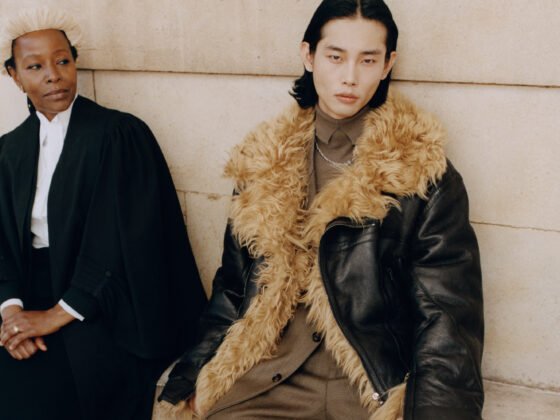Burberry is Britain’s largest luxury brand by sales, but things had not been going as planned with sales flatlining towards the end of the 17-year tenure of Christopher Bailey, the brand’s former Chief Executive cum Chief Creative Officer. The brand’s sales growth lagged significantly behind rivals LVMH and Kering. Burberry was, thus, a house looking for a creative transformation.
In comes Marco Gobbetti, Burberry’s new Chief Executive who is now nearing a year into his five-year plan to re-energise and reposition Burberry as a true upmarket luxury brand with better quality products, higher prices and profit margins; to match the likes of Gucci or Dior. A critical piece of Gobbetti’s restructuring plan was to bring in a new head to the creative side of the brand.
In March of this year, after months of speculation, Riccardo Tisci was introduced to the world as Burberry’s new Chief Creative Officer responsible for its menswear, womenswear and accessories. “I am delighted that Riccardo is joining Burberry. He is one of the most talented designers of our time,” Gobbetti said in a statement following the appointment.
“Riccardo’s designs have an elegance that is contemporary, and his skill in blending streetwear with high fashion is highly relevant to today’s luxury consumer. His creative vision will reinforce the ambitions we have for Burberry and position the brand firmly in luxury.” – Marco Gobbetti, Burberry’s Chief Executive.
“I am honoured and delighted to be joining Burberry and reuniting with Marco Gobbetti,” Tisci said soon after his appointment. Being Italian is not the only thing the two men have in common. As Givenchy’s Chief Executive in 2005, it was Gobbetti who hired Tisci as Creative Director of women’s haute couture and ready-to-wear lines.
Tisci presented his first Givenchy haute couture collection in July 2005 during the Fashion Week in Paris. Unlike the designers who came before him, following the departure of Hubert Givenchy, Tisci was quite successful in the haute couture department; managing to revitalise it in just two years. He told the New York Times in 2007, “when I arrived we had five customers. Now we have 29… My way of showing is very melancholic… I love romanticism and sensuality.”
Even though his early creations found traction with consumers, critics were somewhat slow to latch on. Tisci’s apparent fascination with Gothic touches and space-age minimalism did not seem to impress chunks of fashion world’s aficionados. However, influential fashion critics such as The New York Times’ Cathy Horyn and International Herald Tribune’s Suzy Menkes were able to realise his future potential for revitalising the Givenchy brand.
In May 2008, following positive results, he was given the additional responsibility of designing menswear and accessories. By the time he departed Givenchy amicably in 2017, Tisci had, according to Business of Fashion magazine, “resurrected the Parisian brand to its former profitable glory with dark, sensual and subversive collections. Impressively, the designer crafted distinct brand identities for all of Givenchy’s product categories across women’s and men’s ready-to-wear and haute couture lines.” Business of Fashion has also gone on to include Tisci in their BoF 500 list which “is the definitive professional index of the people shaping the $2.4 trillion fashion industry.”
So how does an Italian designer with Italian sensibilities fit into a brand so immersed into its British heritage? “You have to remember that Riccardo trained at Central St. Martins, and has always had something of a British love affair. He really relishes that eclectic spirit;” according to Glenda Bailey, editor in chief of Harper’s Bazaar as quoted by the New York Times, 2018.
Born in Italy, in 1974, he made a bold decision at the age of eleven to quit regular school and join the Design Istituto d’Arte Applicata in Milan, the city in which he grew up. About this decision, he told the Telegraph in 2013, “I wanted to express myself, and I couldn’t really do it through words at that point. I was very, very shy, very scared of life. It sounds screwed up, but I would get bored with the kids at school who were always playing Pac-Man; I preferred to be at home painting or learning how to garden from my mum.”
At the age of 17, he was selected for a scholarship at Central Saint Martins, London. He graduated in 1999. Following which he worked for brands such as Puma, Antonio Berardi and Coccapani before committing to a three-year contract with Ruffo Research. He then spent time living in India, where he began to work on his own collection which he debuted during the Milan Fashion Week in September 2004. The off-calendar show generated enough buzz around it to land him the creative position at Givenchy. Given what Tisci, in collaboration with Gobbetti, achieved at Givenchy, it should come as no surprise that the fashion-world grapevine is abuzz with cautious optimism for the future of Burberry.










